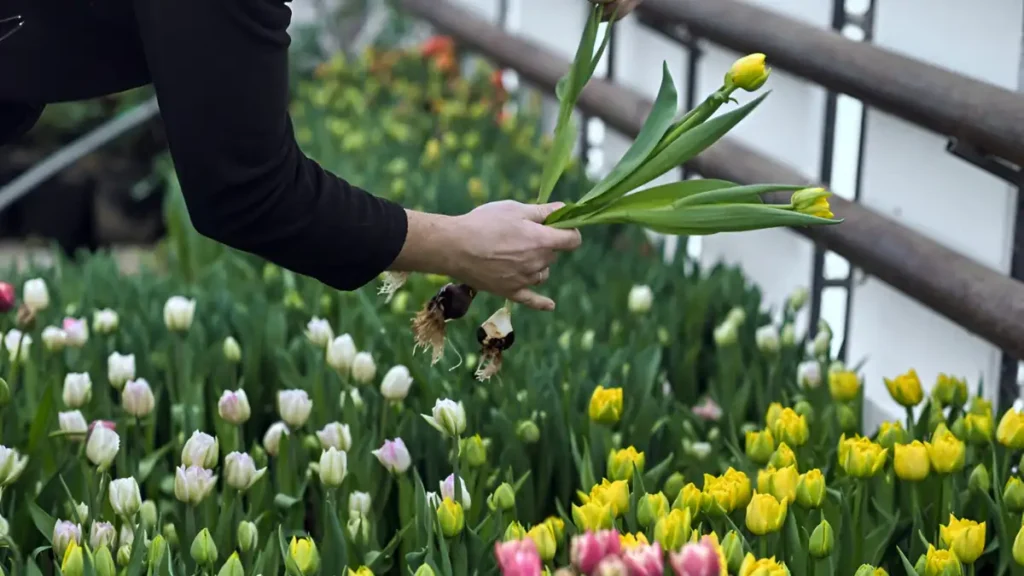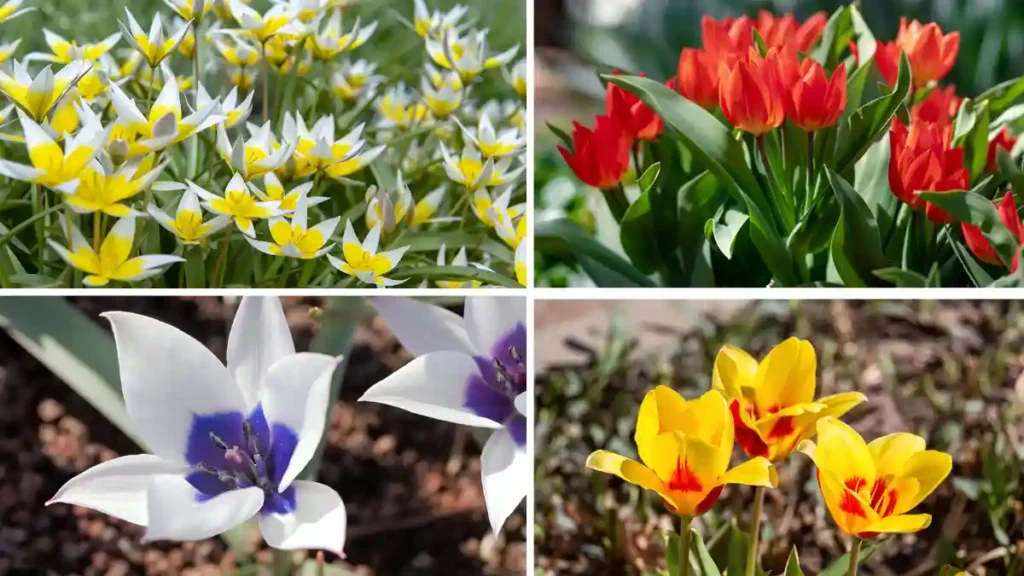Known for their inherent attractiveness and diversity, species tulips, often called botanical tulips, are a beautiful subset of tulip species. Species tulips retain the wild qualities of their forebears, in contrast to the hybridized garden tulips that are frequently found in cultivated landscapes. These charming blooms are indigenous to several parts of Africa, Asia, and Europe.
Here’s how to grow species tulips:
- Tulip species prefer full sun to light shade and well-drained soil. Choose a spot in your yard that gets lots of sunlight, particularly while the flowers are in bloom in the spring.
- Ensure the soil has adequate drainage and is rich in organic materials. To increase drainage, consider supplementing your soil with compost or well-rotted manure if it seems heavy or clay-like.
- Before the first frost, plant tulip bulbs in the fall, preferably in September or October. Make a hole that is 4–6 inches deep, and then space the bulbs 4–6 inches apart. The pointed end of the bulbs should face upward when placed.
- After planting, give the bulbs plenty of water to help settle the soil and encourage root growth. After that, water sparingly, particularly in the summer when the plants are dormant. If you overwater the bulbs, they may decay.

- Tulips don’t need extensive fertilization; apply a balanced fertilizer (10-10-10) to new growth in spring, following the manufacturer’s instructions for application rates.
- Mulch the area surrounding the bulbs to retain moisture, prevent weed growth, and control soil temperature. Compost and shredded bark make excellent organic mulches. Take care not to bury the bulbs too deeply when applying a layer of mulch, about two to three inches thick.
- Remove wasted flowers after blooming to prevent seed production, and allow foliage to fall naturally for bulb restocking. Avoid removing leaves before yellowing or withering.
- Although species tulips tend to be more hardy than hybrid forms, they can nevertheless fall victim to illnesses like tulip fire or pests like aphids. Regularly check your plants for any indications of illness or infestation, and take required corrective measures
Different species tulips to proliferate:
- Tulipa tarda: This kind of tulip has strikingly contrasted yellow blossoms that resemble stars with white tips. It’s well-known for its capacity to naturalize and for its long-lasting blooms.
- Tulipa humilis ‘Little Beauty’: True to its name, this variation is little but incredibly beautiful. It gives the garden a brilliant burst of color with its deep purple blossoms that contrast with golden cores.
- Tulipa praestans ‘Fusilier’: This plant gives spring borders fire and intensity with its fiery red-orange blooms. It is a hardy cultivar that comes back every year.
- Tulipa kaufmanniana ‘Waterlily’: This unusual tulip has big, pink, salmon, or white, waterlily-like blooms that are frequently speckled or marked. It’s a striking option for mattresses or containers.

Conclusion:
To sum up, species tulips have a wide range of interesting characteristics, such as vivid colors, distinctive shapes, and organic growth patterns. They are adaptable additions to landscapes, gardens, and even containers because of their capacity to flourish in a variety of climates and soil types. Species tulips add a touch of untamed beauty and classic elegance to any outdoor environment, whether they are planted in large quantities or scattered among other spring blossoms. This ensures their continued appeal to gardeners and lovers around the world.
Certainly! If you’d like to learn more, please consider following our WhatsApp Channel: Harvest Gardening
A frequently asked questions:
Q1: What are species tulips?
A1: Species tulips are native to different parts of the world; they are distinguished by their vivid colors, distinct shapes, and smaller size. Many contemporary tulip varieties can trace their ancestry to them.
Q2: Can species tulips be grown in containers?
A2: Sure, provided the containers have drainage holes and are filled with potting soil that drains effectively, species tulips can be grown in them. Throughout the growing season, make sure the pots get regular watering and enough sunlight.
Q3: When is the best time to plant species tulips?
A3: Fall is the perfect season to plant species tulips, preferably between September and November, to avoid ground freezing. This enables them to grow roots before the onset of winter.



